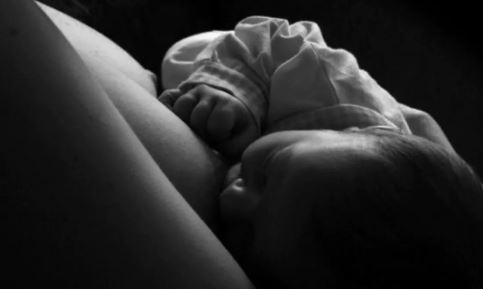Mastitis is inflammation of the breast or udder (i.e. an organ formed of four mammary glands of dairy animals), usually associated with breastfeeding. It is a breast inflammation that may or may not be caused by infection. It happens when bacteria enter the breast through a cracked nipple. Women who are not breastfeeding including men can also have Mastitis. Yeah! Men have breasts, too and like women, they sometimes have to cope with nipple pain. Nursing mothers, you got to be careful ok! It is not an exciting experience for nursing mothers who have experienced it.
This may sound funny when a man brings up a health concern that has to do with breast. Men could feel breast pain from breast injury resulting from sports, motor accidents. They could have “runner’s or marathoner’s nipple – breast irritation as a result of jogging. Mastitis affects animals too. There was a tweet by Investigative Journalist Kiki Mordi’s earlier this month feeling for her cat which was diagnosed with Mastitis. In Nigeria here, Mastitis is also one health issues that leads to major economic losses to the dairy goats in some regions.
Well, it’s about human being here. So, Mastitis mostly affects women. Women who are commonly affected are breastfeeding women. Mastitis usually only affects 1 breast. The affected breast can start to appear lumpy and red. Symptoms are often felt quickly. Testing is usually not needed to detect it. These symptoms could include: a red, swollen area on your breast that is painful to touch, makes break your hurt and hot as well. It is very common during the first 6 months of breastfeeding and make a first time mum feel very tired and run-down. Nursing mothers who don’t know that it “will not harm the baby” at all may even decide to quit breastfeeding completely.
Just so you know, “there is no evidence of harm to a healthy term infant who drinks milk from an affected breast” says sciencedirect.com. So breastfeeding your baby in this condition usually helps ease the pain gradually or help clear up infection. Yes, it sounds like something sweet for your baby but sour for you. Don’t worry you’d be fine. Apart from cracked nipples, inadequate milk removal, infrequent feeding, rapid weaning, and blocked milk ducts may also be the cause. You may find some of these tips helpful as cure or prevention for mastitis else you may need to consult your doctor.
Preventing Mastitis
- Breastfeed regularly. Do not delay or skip feedings. Breastfeed at least every 1 to 3 hours or whenever your baby is hungry (feeding on demand). This helps keep the milk ducts empty. In the first few days after birth, you may have to wake your baby every 2 to 3 hours to breastfeed.
- Alternate which breast you offer first at each feeding and be sure to empty both breasts at each feeding as well as allowing your baby empty one breast before switching to the other breast during feeding. And air-dry your nipples after each breastfeeding session, to prevent irritation and cracking.
- Avoid missing feeds and leaving long gaps between feeds. If you are weaning your baby off breastfeeding, make it gradual and not abrupt such that your baby is given time to adjust to new eating patterns to help prevent your breasts from becoming too full of milk.
- Eat healthy foods and drink plenty of fluids, whenever you are thirsty. Having something to drink while you are breastfeeding helps you get enough fluids. With this you will be able to avoid unnecessary breast milk supplements (BMS).
Stay safe! COVID-19 is real.



